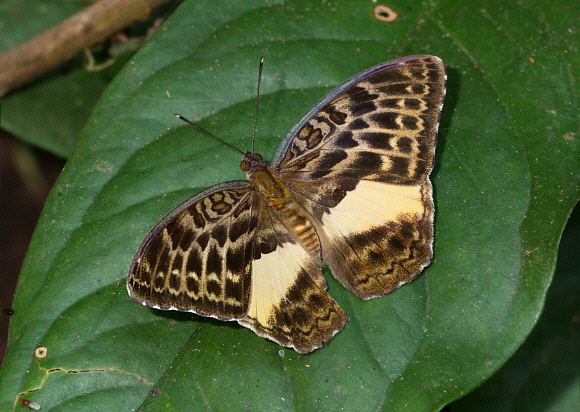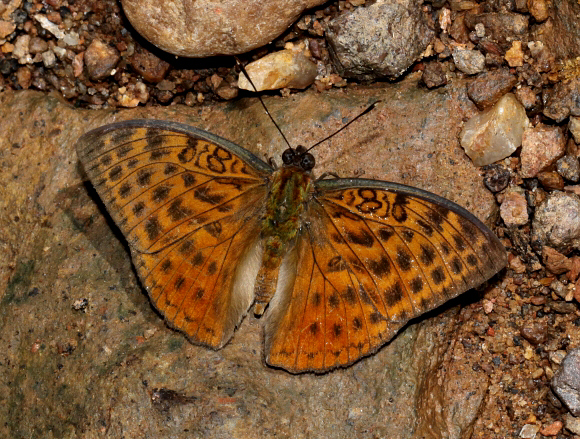
Introduction
There are about 95 Bebearia species, all of which are found in the forests of the Afrotropics.
Males of mandinga and several other Bebearia species have a brown or orange ground colour, with a linear pattern of black spots that is reminiscent of the Fritillaries of the Holarctic. The upperside of the female of mandinga has a Catuna-like pattern of brown and cream. On the underside mandinga has a cryptic ‘dead leaf’ pattern, as do most other Bebearia species.
Bebearia mandinga is distributed from Sierra Leone to Congo and Uganda.
Habitats
This is a rainforest butterfly which is found in the greatest numbers in undisturbed areas, although it also occurs in degraded or secondary forest.
Lifecycle
The eggs are laid in heaps on the leaves of the larval foodplant Hypselodelphus (Marantaceae). The spectacular caterpillars are green, and adorned with an array of multi-branched lateral spines which are appressed to the leaf on which they are resting.
Adult behaviour
The Fritillary-like males tend to be found in more open sunlit situations than the females, and can often be seen sunning themselves in places where shafts of sunlight reach the ground. They also appear commonly at forest-edge habitats where they bask on the lower foliage of bushes.
Females are at least equally abundant, but spend most of their time in the shadier parts of the forest understorey, although they can often be seen basking on foliage early in the day, and again in the late afternoon.

